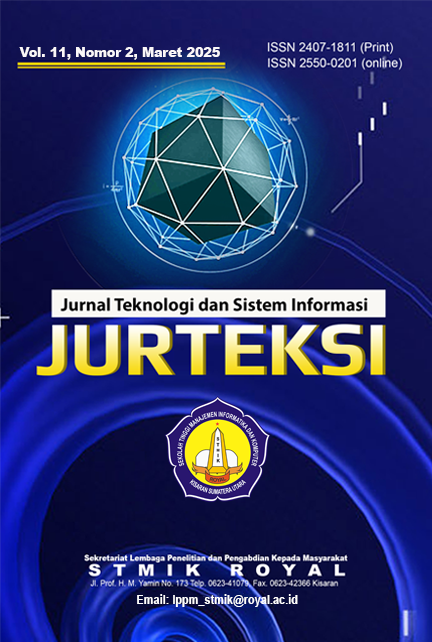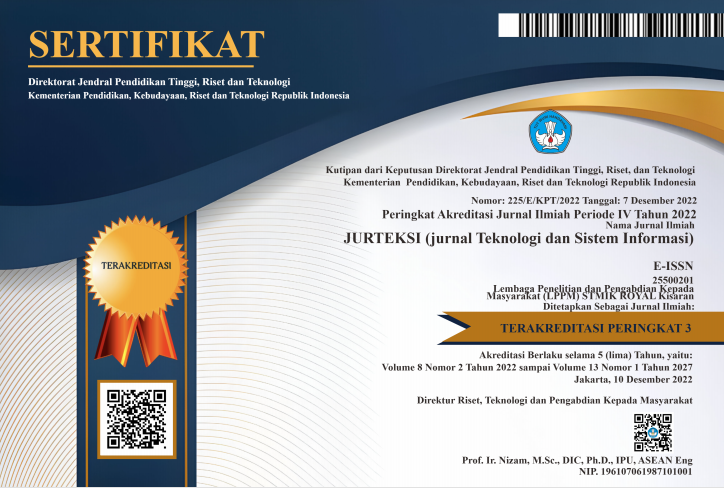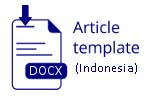AI-BASED ALGORITHMS FOR NETWORK SECURITY: TRENDS, PER-FORMANCE, AND CHALLENGES
Abstract
Abstract: The advancement of network security faces growing challenges as cyberattacks become more sophisticated. Traditional rule-based systems struggle with zero-day attacks and obfuscation techniques. This study examines the development trends of AI-based algo-rithms, particularly machine learning and deep learning, in threat detection. A literature review evaluates AI-driven approaches, including support vector machines, random for-est, deep neural networks, convolutional neural networks, and reinforcement learning. Findings show that AI enhances detection accuracy, adaptability, and reduces false posi-tives. Machine learning efficiently classifies known attacks, while deep learning excels in identifying complex patterns such as distributed denial-of-service and advanced persis-tent threats. Unsupervised learning improves anomaly detection without labeled data. However, AI models require high-quality data, substantial computational resources, and remain vulnerable to adversarial attacks. Despite these challenges, AI provides a dynam-ic and adaptive security solution, surpassing traditional systems. Future research should enhance AI scalability and resilience for evolving cybersecurity threats.
Keywords: anomaly detection; artificial intelligence; deep learning; machine learning; network security
Abstrak: Perkembangan keamanan jaringan menghadapi tantangan yang semakin besar seiring meningkatnya kompleksitas serangan siber. Sistem berbasis aturan tradisional kesulitan mendeteksi zero-day attack dan teknik penyamaran. Penelitian ini mengkaji tren pengembangan algoritma berbasis AI, khususnya machine learning dan deep learning, dalam deteksi ancaman. Literature review mengevaluasi pendekatan berbasis AI, termasuk support vector machines, random forest, deep neural networks, convolutional neural networks, dan reinforcement learning. Hasil penelitian menunjukkan bahwa AI meningkatkan akurasi deteksi, adaptabilitas terhadap ancaman baru, serta mengurangi false positive. Machine learning efektif mengklasifikasikan serangan yang telah diketahui, sementara deep learning unggul dalam mengenali pola kompleks seperti distributed denial-of-service dan advanced persistent threats. Unsupervised learning meningkatkan deteksi anomali tanpa memerlukan data berlabel. Namun, AI masih bergantung pada data berkualitas tinggi, sumber daya komputasi besar, dan rentan terhadap adversarial attack. Meskipun demikian, AI menawarkan solusi keamanan yang lebih dinamis dan adaptif dibandingkan sistem tradisional. Penelitian selanjutnya perlu difokuskan pada peningkatan skalabilitas dan ketahanan AI dalam menghadapi ancaman siber yang terus berkembang.
Kata kunci: deteksi anomali; jaringan keamanan; kecerdasan buatan; pembelajaran dalam; pembelajaran mesin
References
J. Ferdous, R. Islam, A. Mahboubi, and M. Z. Islam, “A Survey on ML Techniques for Multi-Platform Malware Detection: Securing PC, Mobile Devices, IoT, and Cloud Environments,†Sensors, vol. 25, no. 4, 2025, doi: 10.3390/s25041153.
E. Owusu et al., “Online Network DoS/DDoS Detection: Sampling, Change Point Detection, and Machine Learning Methods,†IEEE Commun. Surv. Tutorials, no. December, 2024, doi: 10.1109/COMST.2024.3488580.
M. Almehdhar et al., “Deep Learning in the Fast Lane: A Survey on Advanced Intrusion Detection Systems for Intelligent Vehicle Networks,†IEEE Open J. Veh. Technol., vol. 5, pp. 869–906, 2024, doi: 10.1109/OJVT.2024.3422253.
M. Liu et al., “Enhancing Cyber-Resiliency of DER-based SmartGrid: A Survey,†pp. 1–32, 2023, doi: 10.1109/TSG.2024.3373008.
I. Kamenova, M. Chanev, P. Dimitrov, L. Filchev, B. Bonchev, and L. Zhu, “Crop Type Mapping and Winter Wheat Yield Prediction Utilizing,†2024.
L. Zeng, Q. Liu, S. Shen, and X. Liu, “Improved Double Deep Q Network-Based Task Scheduling Algorithm in Edge Computing for Makespan Optimization,†Tsinghua Sci. Technol., vol. 29, no. 3, pp. 806–817, 2024, doi: 10.26599/TST.2023.9010058.
W. Huang, B. Zhang, K. Zhang, H. Gao, and R. Wan, “Improved AutoEncoder with LSTM module and KL divergence,†vol. 14, no. 8, pp. 1–12, 2024, [Online]. Available: http://arxiv.org/abs/2404.19247
A. Farhadi, M. Mirzarezaee, A. Sharifi, and M. Teshnehlab, “Domain adaptation in reinforcement learning: a comprehensive and systematic study,†Front. Inf. Technol. Electron. Eng., vol. 25, no. 11, pp. 1446–1465, 2024, doi: 10.1631/FITEE.2300668.
O. Friha, M. A. Ferrag, B. Kantarci, B. Cakmak, A. Ozgun, and N. Ghoualmi-Zine, “LLM-Based Edge Intelligence: A Comprehensive Survey on Architectures, Applications, Security and Trustworthiness,†IEEE Open J. Commun. Soc., vol. 5, no. September, pp. 1–1, 2024, doi: 10.1109/ojcoms.2024.3456549.
Kingsley David Onyewuchi Ofoegbu, Olajide Soji Osundare, Chidiebere Somadina Ike, Ololade Gilbert Fakeyede, and Adebimpe Bolatito Ige, “Proactive cyber threat mitigation: Integrating data-driven insights with user-centric security protocols,†Comput. Sci. IT Res. J., vol. 5, no. 8, pp. 2083–2106, 2024, doi: 10.51594/csitrj.v5i8.1493.
M. Latah and L. Toker, “Artificial intelligence enabled software-defined networking: A comprehensive overview,†IET Networks, vol. 8, no. 2, pp. 79–99, 2019, doi: 10.1049/iet-net.2018.5082.
F. Adnan, I. Amelia, and S. ’Umar Shiddiq, “Implementasi Voice Recognition Berbasis Machine Learning,†Implementasi Voice Recognit. Berbas. Mach. Learn., vol. 11, no. 1, pp. 24–29, 2022.
S. O. Semerikov and A. M. Striuk, “Embracing Emerging Technologies: Insights from the 6th Workshop for Young Scientists in Computer Science & Software Engineering,†CEUR Workshop Proc., vol. 3662, pp. 1–36, 2024.
Z. Ahmad, A. Shahid Khan, C. Wai Shiang, J. Abdullah, and F. Ahmad, “Network intrusion detection system: A systematic study of machine learning and deep learning approaches,†Trans. Emerg. Telecommun. Technol., vol. 32, no. 1, pp. 1–29, 2021, doi: 10.1002/ett.4150.
I. Khan, Junaid Khan, S. H. Bangash, Waqas Ahmad, A. I. Khan, and K. Hameed, “Intrusion Detection Using Machine Learning and Deep Learning Models on Cyber Security Attacks,†VFAST Trans. Softw. Eng., vol. 12, no. 2, pp. 95–113, 2024, doi: 10.21015/vtse.v12i2.1817.
W. Ju et al., “A Comprehensive Survey on Deep Graph Representation Learning,†Neural Networks, vol. 173, pp. 287–356, 2024, doi: 10.1016/j.neunet.2024.106207.
C. Ma et al., “Trusted AI in Multiagent Systems: An Overview of Privacy and Security for Distributed Learning,†Proc. IEEE, vol. 111, no. 9, pp. 1097–1132, 2023, doi: 10.1109/JPROC.2023.3306773.
J. Veeramreddy, C. K. R. Vardhireddy, H. Thangella, K. Sarangula, R. Tamidilapati, and B. Pydala, Hybrid Deep Learning Model for Detecting DDoS Attacks in IoT Networks, no. Icciet. Atlantis Press International BV, 2024. doi: 10.2991/978-94-6463-471-6_42.
N. Saran and N. Kesswani, “A comparative study of supervised Machine Learning classifiers for Intrusion Detection in Internet of Things,†Procedia Comput. Sci., vol. 218, no. January 2023, pp. 2049–2057, 2022, doi: 10.1016/j.procs.2023.01.181.
L. Ge, X. Zhou, and Y. Li, “Designing Reward Functions Using Active Preference Learning for Reinforcement Learning in Autonomous Driving Navigation,†Appl. Sci., vol. 14, no. 11, 2024, doi: 10.3390/app14114845.
B. Lin, K. Lin, C. Lin, Y. Lu, Z. Huang, and X. Chen, “Computation offloading strategy based on deep reinforcement learning for connected and autonomous vehicle in vehicular edge computing,†J. Cloud Comput., vol. 10, no. 1, 2021, doi: 10.1186/s13677-021-00246-6.
E. Yaghoubi, E. Yaghoubi, A. Khamees, and A. H. Vakili, A systematic review and meta-analysis of artificial neural network, machine learning, deep learning, and ensemble learning approaches in field of geotechnical engineering, vol. 36, no. 21. Springer London, 2024. doi: 10.1007/s00521-024-09893-7.
M. Neumayer, D. Stecher, S. Grimm, A. Maier, D. Bücker, and J. Schmidt, “Fault and anomaly detection in district heating substations: A survey on methodology and data sets,†Energy, vol. 276, no. December 2022, p. 127569, 2023, doi: 10.1016/j.energy.2023.127569.













